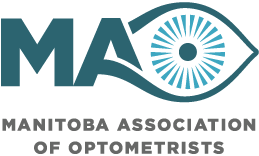Blepharitis
Blepharitis refers to chronic inflammation of the eyelids. It is an external eye disorder that causes red, burning, and irritated eyes. There are several possible causes of blepharitis, including excessive skin bacteria in the eyelash line, acne rosacea, and Demodex mites. This results in dandruff-like flakes of skin and inflammation of the oil glands below the eyelashes. These oil glands are responsible for producing the outermost layer of the tear film. With blepharitis, the oils from these glands don’t flow freely which interferes with the function of the tear film, causing dryness. Blepharitis frequently occurs in people who have a tendency towards oily skin and dandruff. It can occur at any age.
Symptoms
Left untreated, these glands can become irritated and possibly infected. Loss of eyelashes can occur, as well as recurrent painful eyelid swelling or styes. Dandruff-like scales may be found at the base of the eyelashes. Many patients complain of burning, gritty feeling eyes which are worse in the morning upon awakening, in addition to their eyelids being matted shut.
Treatment
Blepharitis is a chronic condition, and there is no cure, but appropriate treatments can help manage symptoms. While over-the-counter treatments for blepharitis are available, it is advisable to consult your optometrist if you experience these symptoms. There are several ways to treat blepharitis. Cleaning away the crusty material around the lashes with warm compresses (at least twice daily) helps keep the lashes clean and improves the flow of the oily component of tears. Commercial lid scrubs (medicated pads similar to the ones used to remove eye makeup) help clean the eyelids further. An effective substitute for commercial lid scrubs is a small amount of baby shampoo diluted with warm water and applied to the eyelashes with a cotton ball. In some cases, prescription antibiotic ointments applied to the lid margins may help manage the symptoms of blepharitis. Artificial tear and steroid eye drops may also be prescribed by your optometrist. In severe cases, oral antibiotics may be required.
